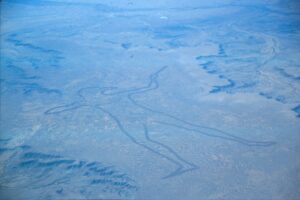Russia explorer Fedor Konyukhov is planning an attempt at the hot-air balloon altitude record in April, 2020.
According to the World Air Sports Federation, Vijaypat Singhania set the current hot-air record of 21,027m in 2005 over Mumbai, India. Konyukhov aims to reach 25,000m, almost three times the height of Mount Everest and more than twice the height of commercial airline flights. The balloon from which Felix Baumgartner parachuted in 2012 soared to more than 39,000m, but it was filled with helium.
With probably the most extensive exploration CV on the planet, the 67-year-old Orthodox priest has conquered the North and South Poles, scaled Mount Everest twice, rowed across the Atlantic and Pacific Oceans and sailed solo around the world four times.
Just the fourth and fastest person to complete a non-stop, round-the-world hot air balloon flight, Konyukhov was awarded the Fédération Aéronautique Internationale Pilot of the Year in 2016. Earlier this year, he completed a 10,000km, 154-day row across the Southern Pacific Ocean from New Zealand to Chile.
Taking off from a site near Northam, in Western Australia, Konyukhov hopes to complete a childhood dream of flying high enough to see the curvature of the earth and to look out at the inky-blackness of the cosmos.
The envelope will be the largest ever built for a hot-air balloon. It will be a Cameron Balloons Z-3,500,000 hot-air envelope, with a volume of 3.5million cubic feet. A typical sport balloon has a volume of about 2,500 cubic metres. The envelope stands 70m tall, 61m at its widest point and will contain more than 8.5km of fabric.

Drawing: Cameron Balloons
According to Cameron Balloons chief executive Don Cameron, the vast size presents big technical challenges. “The balloon has to be extraordinarily big because he’s going to the edge of space, where there’s only about 2 percent of the atmosphere left,” he explained. “That means that the lifting force is very weak and we can only counteract that by making the balloon enormous.”
“We’ve had great difficulty even inspecting and testing it, because if we inflate it in the sunshine, just the warmth of the sun heating it a few degrees would give it an uncontrollable amount of lift. Its first full inflation will be on the day it flies.”

Fedor Konyukhov and Cameron check on the progress
of the capsule development. Photo: Cameron Balloons
While Konyukhov will travel in a pressurized capsule fitted with special parachutes in case of emergencies, he still acknowledges the danger of the attempt. “This capsule gives me comfort and a sense of security, but I only have buttons to control the burners and envelope,” he said. “I am confident that the capsule will survive the flight and save me during the flight and landing, but this project cannot guarantee 100 percent success.”






